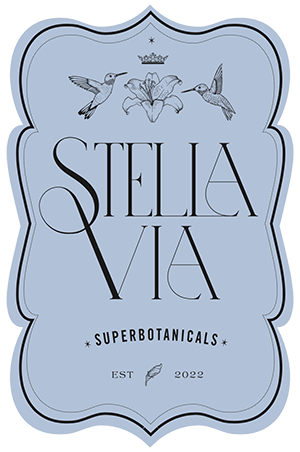

Do you ever wake up and feel like you’ve run a marathon when you haven’t worked out in days? When you are experiencing menopause, fluctuating hormone levels can wreak havoc on your body. But there are things you can do to ease your discomfort.
What can cause aches and pains during menopause, especially in the legs? Here you’ll learn how menopause is related to muscle pain and how you can soothe these aches and pains.
Declining estrogen, a characteristic of menopause, is usually the root cause. You get pain in your legs during menopause including aches, cramps, swelling, cellulite, and even uncomfortable hotness as your hormone levels decrease.
It’s all due to inflammation. As we lose estrogen during perimenopause and menopause, these irritating—even debilitating–pains can get worse from inflammation. Our joints and muscles need estrogen to stay flexible and strong.
There are estrogen receptors all over your body, so achiness may not be confined to your legs. You may feel pain in your shoulders, neck, elbows and hands.
In some cases, the pain can be unnerving and it’s best to see your doctor. If you’re at “annoyance level,” there are plenty of things you can do to alleviate the discomfort.
Products with arnica can be supportive to finding relief from muscle pain. Try StellaVia SuperBotanical™ Sore Muscle Gel Roll On or StellaVia SuperBotanical Body Ache Patches.
Have your doctor check your magnesium levels. This mineral is woefully under-appreciated and a lack of it can have serious consequences.
Among the experts, magnesium is often referred to as the “relaxation mineral.” One telltale sign that you are deficient (which 10%-30% of adults are, according to this study), is that you can’t get rid of the feeling of tight, tense, cramped or stiff muscles and joints all throughout the day and even in your sleep. .
The good news? The mineral, which you can take in pill form as a supplement, also purportedly improves mental stress and addresses improved cardiovascular health, help for depression, better sleep, and keeps your metabolism from slowing.
Low magnesium levels are hard to detect, since less than 1% of your body’s magnesium is found in the blood. It’s fair to assume that you need more than you’re getting– most people do. Food-wise, you’d have to consume an unappetizing amount of dark, leafy green vegetables and whole grains or dark chocolate to get the recommended daily intake.
To counteract the inflammation your joints and muscles are experiencing due to waning hormone levels, consider a magnesium supplement with 250-400mg mg per day. Women who have added this mineral to their daily routine report major improvements.
Around this time of life, you may begin to notice varicose veins, experience cold feet and hands, and be followed by dizziness and lack of energy. These can be indicators of sluggish circulation.
Healthy circulation is important at every stage of life—it transports oxygen and nutrients to cells and removes wastes and toxins. Combat this dangerous slow-down with herbs such as buckthorn and rhubarb (which also may help prevent hemorrhoids.) Ginkgo biloba, which is known as the “memory tree” because it is thought to help increase circulation to the brain.
Spending a lot of time sitting can exacerbate poor circulation. Here, exercise shines again as a cure-all, and it doesn’t have to be an overwhelming amount. Even a good 10-minute brisk walk can work wonders for getting things moving in your body.
Also, consider dry skin brushing, which is an age-old practice that has recently received a lot of new attention. Why? Because it works. Invest in a well-rated skin brush, and apply light pressure before you shower, moving in circular motions from your ankles upwards. Not only will you improve circulation, you may also get a natural glow and smoother skin for your trouble.
You can feel aches and pains more acutely when you’re as little as 2% dehydrated, experts say.
Keep a water bottle handy at all times and—this is key—drink before you’re actually thirsty. Thirst is the body’s way of alerting you that something is wrong. Don’t wait. This can make muscle and joint aches worse and can cause sodium depletion (you lose sodium when you sweat—remember—hot flashes). Loss of sodium is another reason for aches and pains.
“Stand up straight” never meant so much as it does today. The harm you can cause your bones and joints by slouching adds up, and over time the result is anything but pretty. Dowager’s hump is the colloquial term for the condition. The loss of hormones during this time causes your bones and joints to lose strength. If you begin to favor one side of our body, for example, due to muscle aches, it can have a marked long-term effect on your posture. Taking stretching classes or yoga can help alleviate some of these wear-and-tear issues. There are even at-home classes online and in-person that can help for guidance and motivation.
Weakening bones and muscles cause your body to work harder just to do the simple, everyday things that used to come easily. This causes exhaustion. Similarly, we may not sleep as well when we’re in pain. It’s a vicious cycle.
Consider stretching every day. Stretching can help keep joints and muscles flexible and limber. And try StellaVia’s aches and pains remedies—gels, patches and roll-ons.
The more weight you’re carrying on your frame, the more stress you’re applying to your muscles and joints. Keeping up a simple exercise routine not only keeps you feeling better physically but can improve your mood, and keep you feeling more like yourself.
At work? Take a good look around. Are you setting up your future self for failure by sitting in the wrong chair, or hunching over your laptop all day without stopping to stretch? If so, it’s worth the time and money to set up a healthy workstation. Some things to shoot for: find a supportive chair, maintain a comfortable body temperature, ensure your space is properly ventilated and most important, set up your workstation to fit your stature. Sit at a height that allows your elbows to be level with the workstation when your shoulders are relaxed, that your feet are firmly planted on the floor, set your screen height to be right at your eye line and keep your keyboard close to you.
When we experience stress at any point in our lives, the body becomes primed for attack, and the adrenal glands produce cortisol and adrenaline. High levels of cortisol can cause fatigue, body aches, weight gain, insomnia and foggy thinking. Try: “SuperBotanical -Muscle Freeze Roll-On | Stella Via”
Who can get good, satisfying slumber when their legs are aching? To alleviate these, do some gentle stretches before bedtime and try StellaVia’s SuperBotanical Body Ache Patches and SuperBotanical Sore Muscle Gel
CBT is a well-respected, proven way to use your mind to control bodily aches and pains. It involves re-learning how to think with improved thought patterns.. With this type of therapy you learn to stop focusing on the pain in your muscles and joints and substitute positive thoughts in their place. In addition to CBT, some common tools to achieve this include meditation, yoga, muscle relaxation or guided imagery.
You’ve heard it before, but yoga can help pretty much everything menopause-related that ails you!.Not only does it provide excellent stretching and a time to be mindful and thankful for your body, it also creates better sleep, raises your mood, and diffuses anxiety.
Take control of your inflammation situation. As we move through perimenopause and menopause, our joints and tissues swell, sending a signal to our brain that triggers pain and discomfort in the area. To fight off inflammation, pay attention to your diet, including more antioxidants, fatty fish, lentils, cherries, chia seeds and dark chocolate. Think holistically—every positive change you make in your daily routine will help improve your symptoms. Reaching out to a physiotherapy practitioner may also alleviate symptoms—massage and movement is always good for decreasing leg aches and swelling.
Some OTC products are known to work quite well to soothe your painful symptoms! Speak to your doctor about the best types for you, making sure to disclose all of the other medications and supplements you’re currently taking. The favorite of our StellaVia doctors? Good old fashioned ibuprofen, with an ice pack or StellaVia SuperBotanical Sore Muscle Gel Roll On thrown in for knee pain.
While this protocol works for many women going through perimenopause and menopause, as it has been shown to help musculoskelatal pains and arthritis, as always, see your doctor before beginning any program. For instance, women who have had breast cancer and some other diseases are not recommended to take HRT and some doctors will not recommend it to patients over a certain age.
You don’t have to take aching muscle and joint pain laying down during menopause. Exercise, stretching, a thoughtful diet and the right supplements like nature-based StellaVia SuperBotanicals, can get you back to feeling better again.